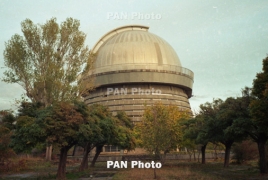
At the Byurakan Astrophysical Observatory, scientists have solved a problem left unresolved since 1915 in Albert Einstein’s general theory of relativity: calculating the “relative velocity” of a test particle with respect to an observer in arbitrary pseudo-Riemannian space. This achievement was reported by the National Academy of Sciences of Armenia.
Dr. Gagik Ter-Kazarian, principal researcher at the Victor Hambardzumyan Byurakan Astrophysical Observatory, detailed the breakthrough in two articles published in the journal Gravitation and Cosmology. In the 2022 article titled “On the Kinetic Recession Velocities of Astronomical Objects” (Vol. 28, No. 2), he defines and calculates the actual, so-called “kinetic” recession velocity of astronomical bodies.
The results show that these velocities always remain below the speed of light in vacuum, regardless of redshift values, thus preserving the principle of causality in physics.
Ter-Kazarian also quantified how much of astronomical objects' motion is due to cosmic expansion—another crucial metric.
He explained that this astrophysical challenge is just one manifestation of a broader and long-unsolved issue in physics: calculating “relative velocity” in curved space. Since 1915, this problem had remained unresolved in Einstein’s general relativity due to the difficulty of performing “parallel transport” of a velocity vector in curved spacetime, which is essential for calculating relative motion.
Ter-Kazarian announced that he overcame this barrier in 2023 by solving the problem for any Riemannian space. His findings were published in another article, “Coordinate-Independent Definition of Relative Velocity in Pseudo-Riemannian Space-Time: Implications for Special Cases” (Vol. 29, No. 1), where he defines and calculates the relative velocity of a test particle along an observer’s worldline for all possible cases.
As an application, he computed this velocity for several key scenarios: Minkowski metrics, arbitrary stationary metrics with both particle and observer at rest, homogeneous gravitational fields, rotating coordinate systems, Schwarzschild metrics, Kerr-type metrics, and Robertson–Walker metrics.

